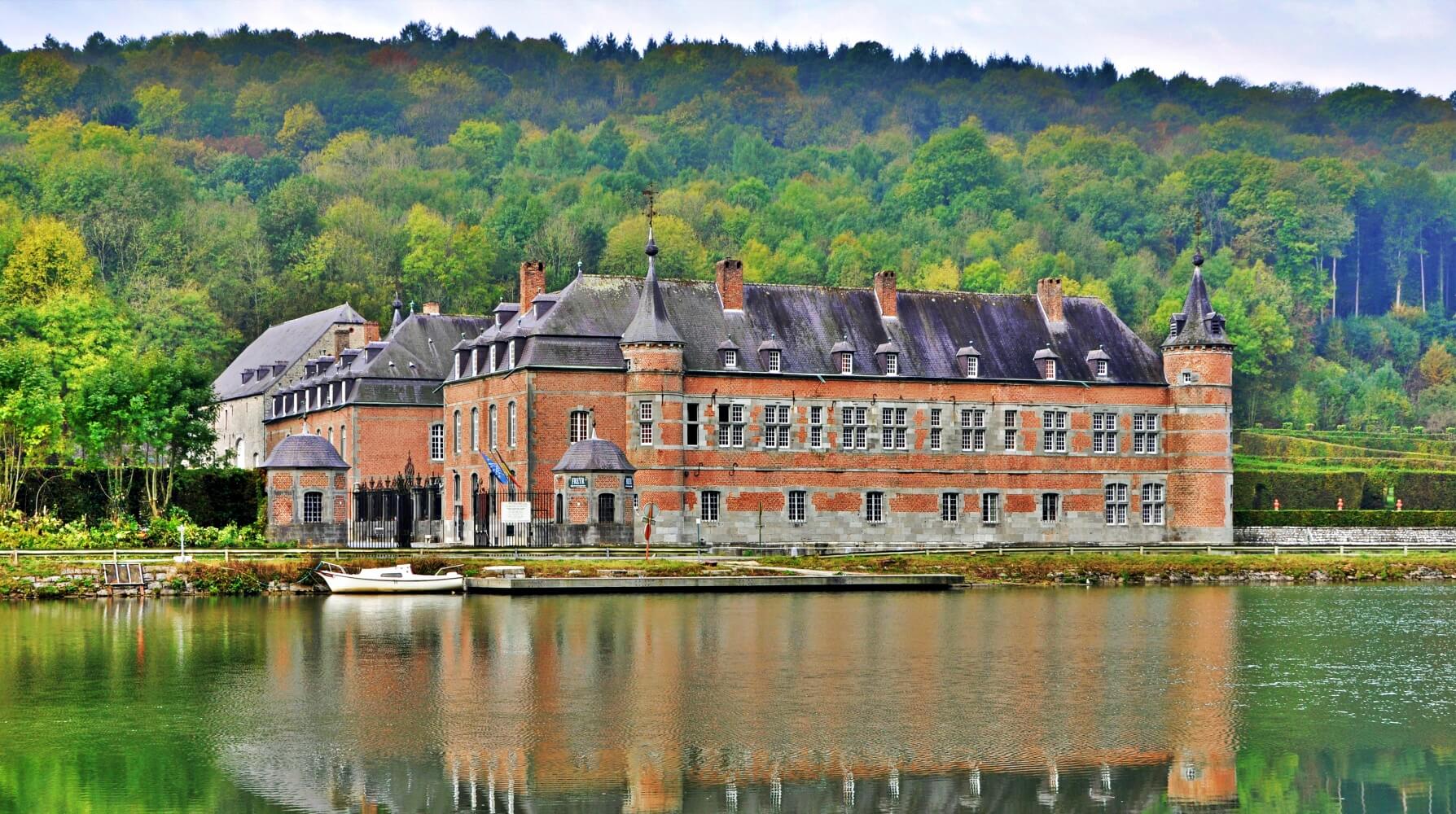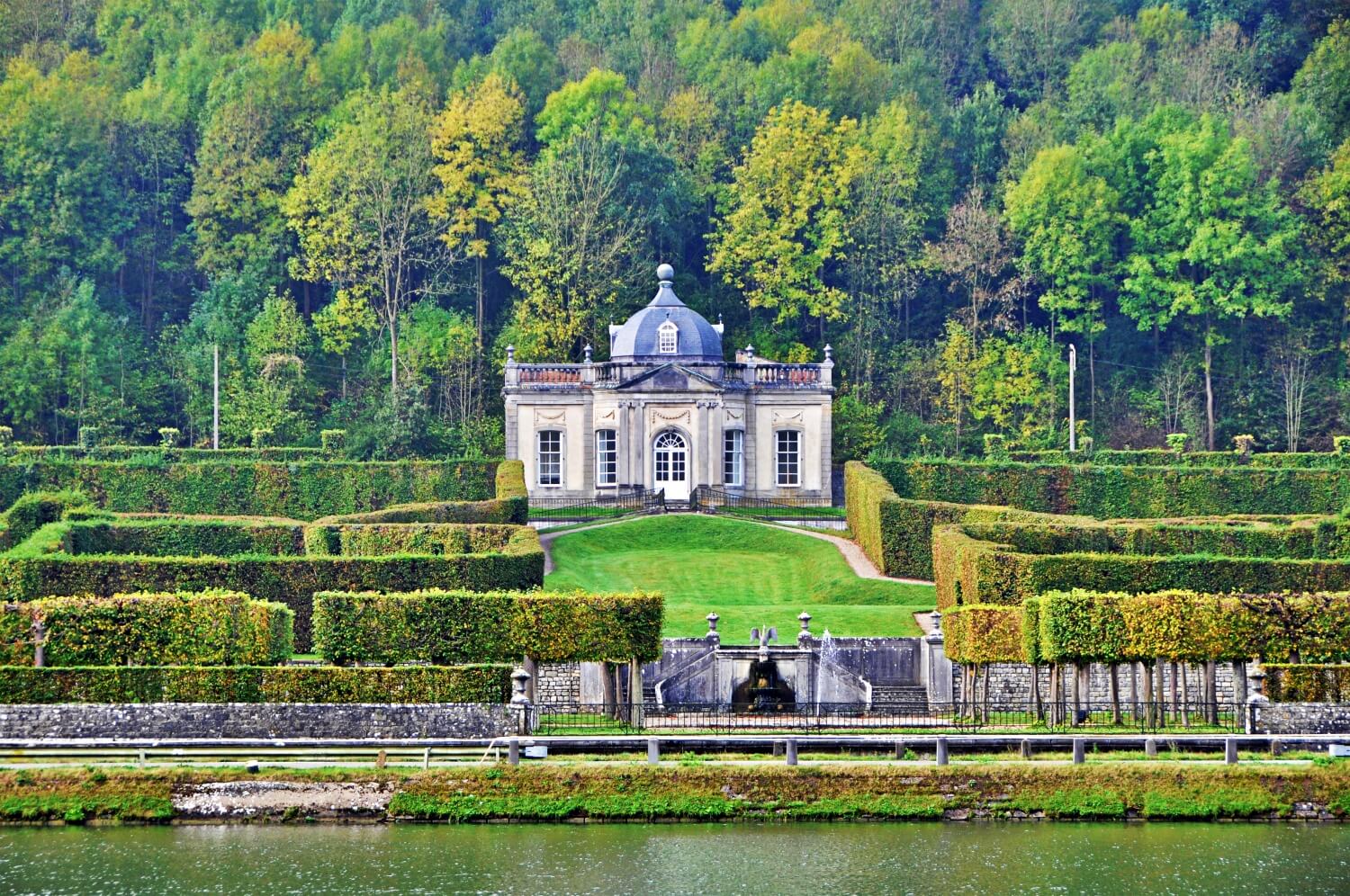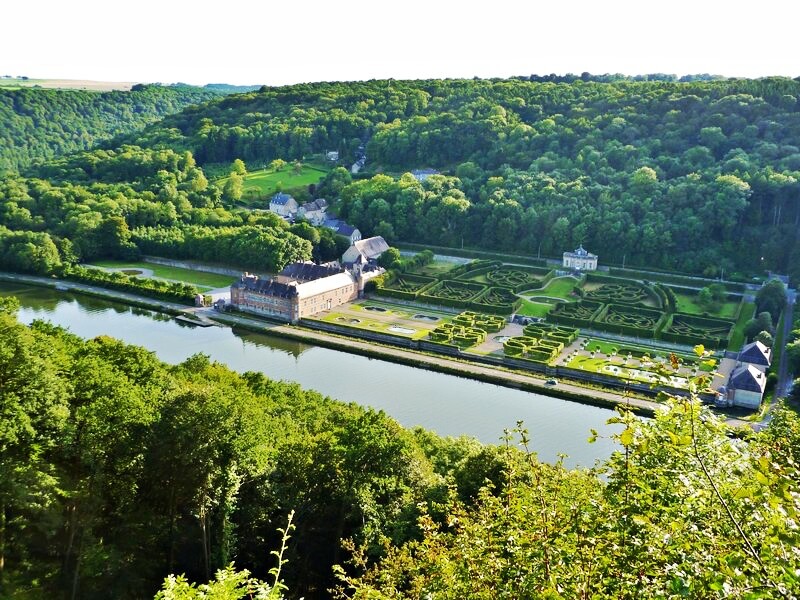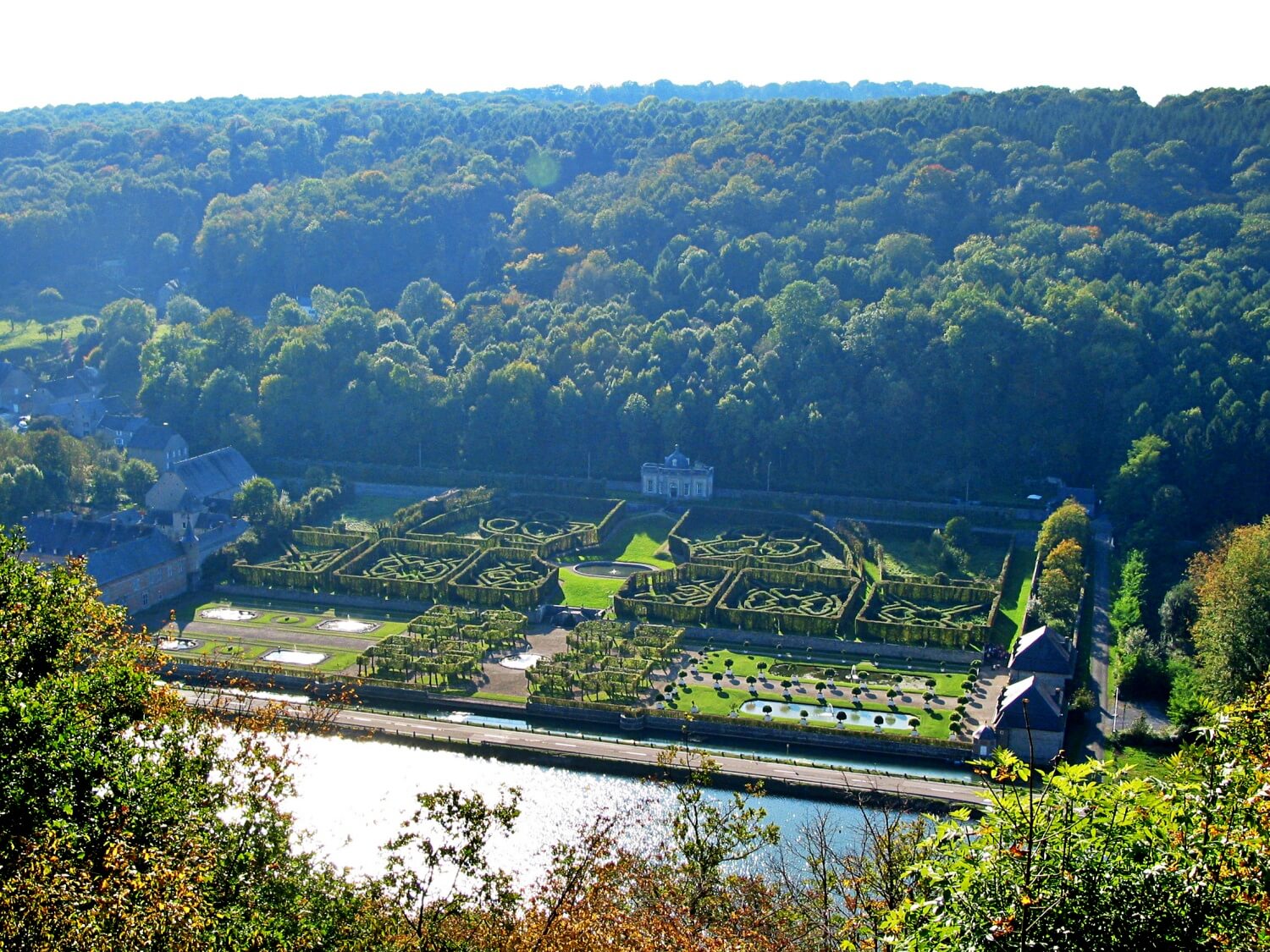Castle of Freÿr
Namur Région Wallonne Belgium
castle, chateau
Château de Freÿr
Namur Région Wallonne Belgium
castle, chateau
Kasteel van Freÿr
Namur Région Wallonne Belgium
castle, chateau
The castle of Freÿr with its gardens in the style of Le Nôtre is located on the left bank of the Meuse, between Waulsort and Dinant (province of Namur, Belgium)
Le château de Freÿr et ses jardins, sis le long de la Meuse (rive gauche), entre Waulsort et Dinant, forment avec les rochers de Freÿr sur l'autre rive un des plus beaux sites naturels de Belgique
Het kasteel van Freÿr is gelegen in het gelijknamige dorp Freÿr in de gemeente Hastière in de Belgische provincie Namen
Previous names
Castle of Freÿr, Château de Freÿr, Kasteel van Freÿr
Description
The castle of Freÿr with its gardens in the style of Le Nôtre is located on the left bank of the Meuse, between Waulsort and Dinant (province of Namur, Belgium). They form one of the most magnificent natural sites in Belgium. It has been classified as one of Wallonia's major heritage sites.
The castle
Dating back to the Middle Ages, Freÿr was a keep given in fief by the Count of Namur to Jean de Rochefort Orjol in 1378. His granddaughter Marie married Jacques de Beaufort in 1410. Their descendants have kept the estate until the present.
Outside
The keep was destroyed in 1554 by the French during the wars against Emperor Charles V. The oldest part of the current castle, the east wing, was built in 1571 and is one of the first examples of the "Renaissance Mosane" style.
During the 17th century the house was enlarged by the addition of three wings, forming a square with the original wing.
Around 1760 the south wing was pulled down and replaced by a wrought iron gate reminiscent of Jean Lamour's masterpiece in Nancy, closing the inner yard to give the castle its current appearance.
The gardens
Designed in the style of André Le Nôtre in 1760 by Canon Guillaume de Beaufort-Spontin and enlarged by his brother Philippe in 1770, the gardens are set on walled terraces on the left bank of the Meuse. They offer views towards the woods to the north and towards the Meuse to the east, and their peace and serenity contrast with the naked rockface on the far bank.
Ponds and fountains babble on the lower level where orange trees spread their delicate perfume. Most of them are 350 years old. The trees came to Freÿr in the first part of the 18th century from Lunéville, the residence of the Duke of Lorraine. They are the oldest trees in cases in Europe (Icomos Conference Orangerien in Europa - Von fürstlichem Vermögen und gärtnerischer Kunst, Bamberg 2005). The wooden cases are still built according to the original design. The oldest orangery of the Low Countries (early 18th century) combines elegance and simplicity.
The upper level is covered by hedge mazes (6 km) that unveil their mysteries one by one: a set of patterns inspired by card game figures, a theme also present in the terra cotta statues made by Cyfflé.
At the very top of the gardens, the Rococo pavilion commands the view on the Meuse and seduces by its delicate stucco decoration, based on the theme of fertility with cornucopia and Tritons.
The right bank of the Meuse is dominated by cliffs (more than 100 m high, 340 million years old), from which one has an exceptional view of the estate.
Le château de Freÿr et ses jardins, sis le long de la Meuse (rive gauche), entre Waulsort et Dinant, forment avec les rochers de Freÿr sur l'autre rive un des plus beaux sites naturels de Belgique. Ils sont classés au Patrimoine majeur de Wallonie.
Le château
Façade du château
Au Moyen Âge, le château fort est cédé en fief par le comte de Namur à Jean de Rochefort Orjol en 1378. Sa petite-fille Marie se maria à Jacques de Beaufort en 1410.
Frédéric Auguste Alexandre de Beaufort-Spontin, était nommé duc de Beaufort-Spontin en 1782. Les descendants de sa fille Hermengilde (Gilda) Mouchet de Battefort, comtesse de Laubespin (1813-1880), héritière du château en 1817, aujourd'hui les Barons Bonaert, ont habité les lieux jusqu'à ce jour. Les frères de Gilda, le 2e et le 3e duc, habitaient le château de Bečov nad Teplou dans la Bohême qu'avait acheté le duc Frédéric Auguste en 1813.
Extérieur
Le château fort fut détruit en 1554 par les Français durant les guerres contre l'empereur Charles Quint. La plus ancienne partie du château actuel, l'aile, fut construite en 1571 et est un des premiers exemples du style « Renaissance mosane ».
Au xviie siècle, la demeure fut amplifiée par l'addition de trois nouvelles ailes, formant ainsi un quadrilatère.
Vers 1760, l'aile sud fut détruite et remplacée par la grille en fer forgé rappelant le chef-d'œuvre de Jean Lamour à Nancy, la place Stanislas, et fermant ainsi la cour d'honneur pour donner au château son aspect actuel.
Les jardins
Dessinés « à la Le Nôtre » en 1760 par le chanoine Guillaume de Beaufort-Spontin et agrandis par son frère Philippe en 1770, les jardins s'étalent sur des terrasses sur la rive gauche de la Meuse. Ils offrent des perspectives au nord vers les bois et au sud vers la Meuse et procurent paix et sérénité.
Des jets d'eau et bassins animent le parterre où des orangers répandent leur parfum délicat. Nombreux sont ceux qui ont 350 ans. Ces arbres vinrent à Freÿr de Lunéville, la résidence des ducs de Lorraine, au cours de la première partie du xviiie siècle. Ils sont les arbres les plus anciens en caisses d'Europe1. Les caisses en bois sont toujours construites suivant les plans initiaux. Les orangeries les plus anciennes des Pays-Bas (début XVIIIe) combinent élégance et simplicité.
Le niveau supérieur est couvert de charmilles (6 km) qui révèlent leurs mystères une à une : un ensemble de dessins inspirés des figures d'un jeu de carte, un thème aussi présent dans les statues en terracotta de Paul-Louis Cyfflé.
Au sommet des jardins, le pavillon rococo commande une vue exceptionnelle sur la vallée et séduit par ses stucs délicats. Durant la seconde guerre mondiale, les Allemands firent construire une ligne de chemin de fer, qui coupa les jardins en deux par une tranchée au raz du pavillon rococo, dont l'utilisation fut abandonnée à la fin du conflit, mais qui subsiste encore aujourd'hui.
La rive droite de la Meuse est dominée par des falaises (de plus de 100 m de hauteur, 340 millions d'âge). Ce sont les rochers de Freÿr, d'où on a une vue exceptionnelle sur l'ensemble des château et jardins.
Francis Bonaert et Nathalie Harlez de Deulin précisent que « les jardins de Freÿr constituent sans doute l'exemple le plus purement français conservé en Wallonie »
Jardins de Freÿr et rochers de Freÿrґ
Bien qu'apparemment liés au même lieu les jardins de Freÿr et les rochers de Freÿr sont deux sites à distinguer. Les jardins de Freÿr s'étendent sur la rive gauche de la Meuse, les rochers descendent à pic dans la Meuse sur la rive droite. Il s'agit donc de deux sites différents, l'un naturel, l'autre œuvre de l'art humain. Les rochers de Freÿr ont été proposés il y a quelques années pour être sur la Liste du patrimoine mondial de l’UNESCO. Ces deux sites sont liés l'un à l'autre par le hasard de la rencontre d'une œuvre de l'Homme et d'une œuvre de la Nature.
Het kasteel van Freÿr is gelegen in het gelijknamige dorp Freÿr in de gemeente Hastière in de Belgische provincie Namen. Men noemt het wel een sterk verkleind Versailles.[bron?] Het is een oorspronkelijk renaissancekasteel, uitgebreid in de 18e eeuw en was eens de residentie voor hertogen en hun koninklijke gasten. Het heeft tuinen met onder andere sinaasappelbomen. De meer dan driehonderd jaar oude oranjeries zijn de oudste van de Lage Landen.
Het kasteel
In de middeleeuwen was Freÿr een slot, dat in 1378 als leengoed aan Jean de Rochefort Orjol werd gegeven door de graaf van Namen. Zijn kleindochter Marie huwde met Jacques de Beaufort in 1410. Hun afstammelingen behielden het landgoed tot op vandaag.
Buitenkant
Het slot werd in 1554 door de Fransen vernietigd in de oorlogen tegen keizer Karel V. Het oudste gedeelte van het huidig kasteel, de oostelijke vleugel, werd in 1571 gebouwd als een van de eerste voorbeelden van de Maaslandse Renaissance.
Gedurende de 17e eeuw werd het woongedeelte vergroot door toevoeging van drie vleugels, zodat een vierkant met de eerste vleugel ontstond.
Rond 1760 werd de zuidgevel neergehaald en vervangen door een smeedijzeren poort die herinnert aan Jean Lamour's meesterwerk in Nancy en waarmee het binnenhof van het kasteel werd afgesloten, zodat het kasteel zijn huidig voorkomen verkreeg.
De tuinen
Ontworpen in de stijl van André Le Nôtre in 1760 door Canon Guillaume de Beaufort-Spontin en vergroot door zijn broer Philippe in 1770, zijn de tuinen op ommuurde terrassen gelegen aan de linker oever van de Maas. Ze bieden uitzicht op de wouden in het noorden en op de Maas in het oosten, en hun rust en sereniteit contrasteert met de naakte rotswanden op de verre oever.
Vijvers en fonteinen klateren op het lagere niveau waar oranjeboompjes hun delicate geur verspreiden. De meeste zijn meer dan 350 jaar oud. Deze bomen zijn in Freÿr toegekomen gedurende de eerste helft van de 18e eeuw. Zij kwamen uit Lunéville, de residentie van de hertog van Lotharingen. Het zijn de oudste bomen in hun soort in Europa (Icomos Conference Orangerien in Europa - Von fürstlichem Vermögen und gärtnerischer Kunst, Bamberg 2005). De houten bakken worden nog steeds volgens het origineel ontwerp gemaakt. Deze oudste oranjerie van de Lage Landen (vroeg 18e eeuw) combineert elegantie en eenvoud.
Het hogere niveau is bedekt met haagdoolhoven (6 km) die een voor een hun geheimen onthullen: een patrooncombinatie geïnspireerd op speelkaartfiguren, thema dat eveneens terugkeert in de terracotta beelden van Cyfflé.
Helemaal boven de tuinen uit domineert het rococo paviljoen met uitzicht op de Maas en verleidt door zijn stucco decoratie, gebaseerd op het vruchtbaarheidsthema met cornucopia en Tritons. Het paviljoen wordt van de rest van de tuinen gescheiden door de in 1860 aangelegde spoorlijn 156.
De rechteroever van de Maas wordt gedomineerd door rotsen van meer dan 100 m hoog (340 miljoen jaar oud), vanaf waar men een buitengewoon uitzicht op het domein heeft.
Nearby castles
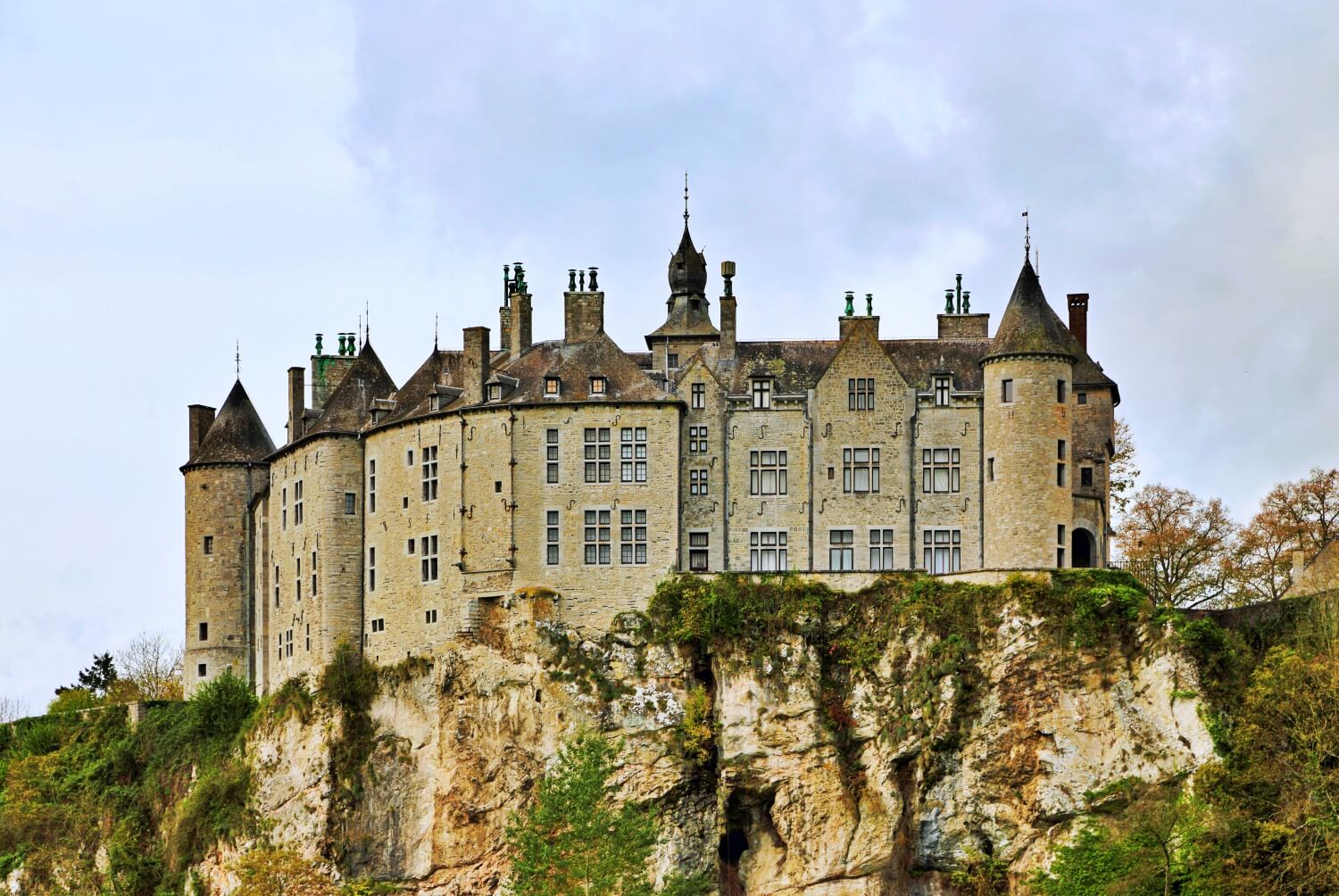
Walzin Castle
Namur
2.5km
castle, chateau
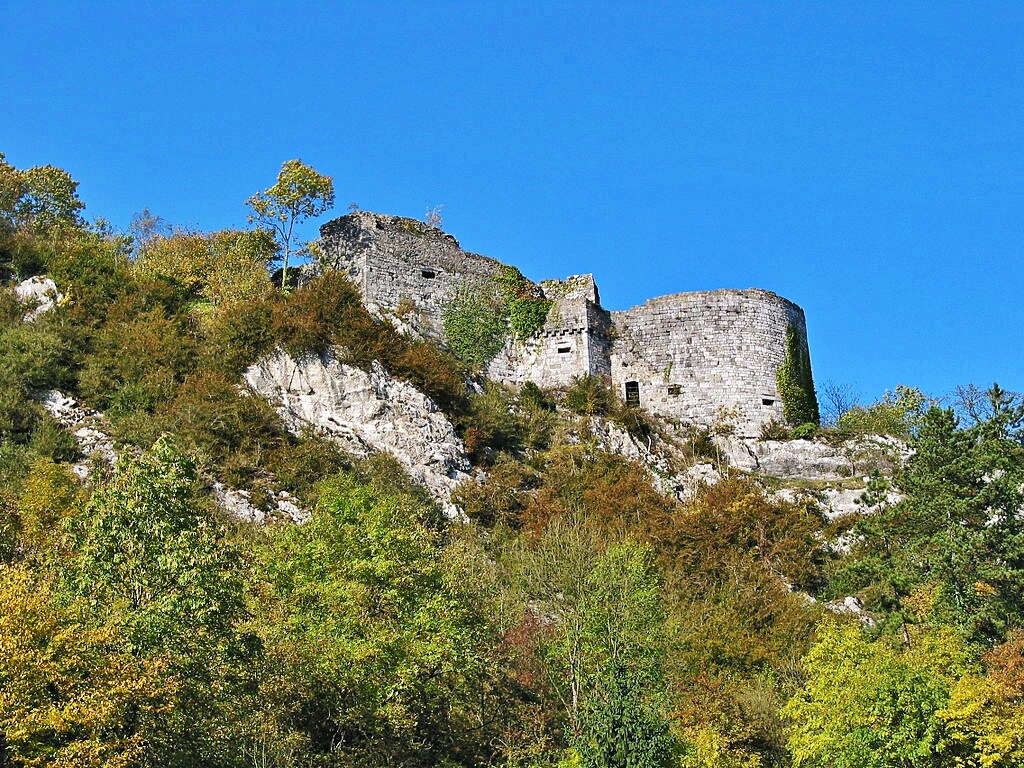
Crèvecœur Castle
Namur
5.3km
castle, chateau

Kasteel van Vêves
Namur
6.7km
manor, mansion
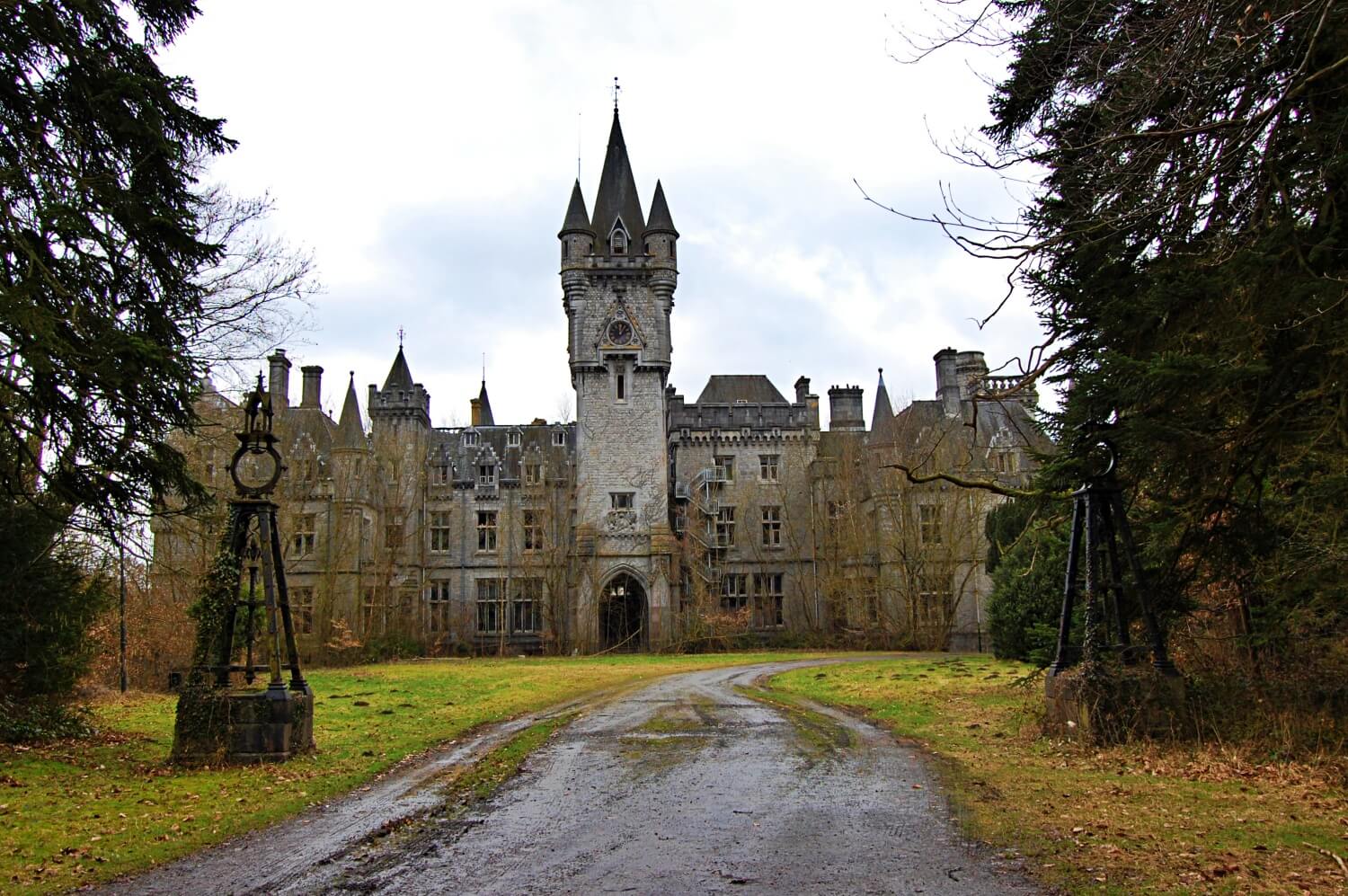
Miranda Castle
Province of Namur
7.2km
castle, chateau
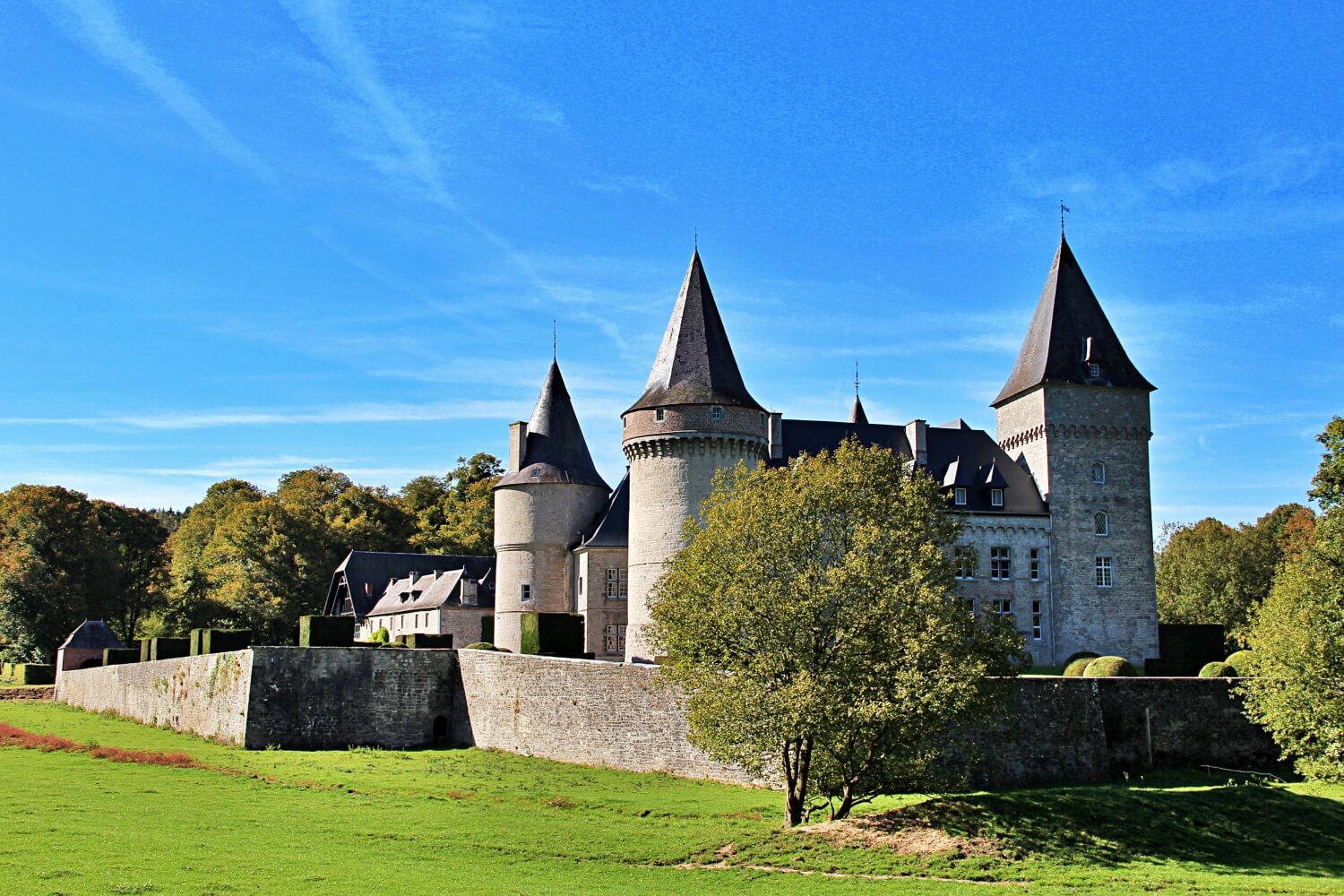
Kasteel van Fontaine (Anthée)
Province of Namur
8.7km
manor, mansion
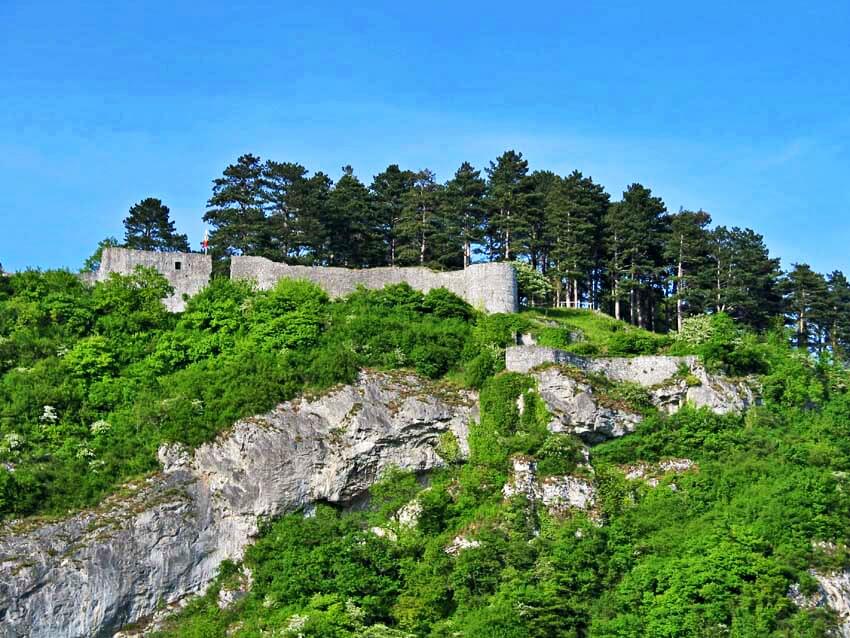
Poilvache Castle
Namur
8.8km
castle, chateau

Kasteelhoeve van Falaën
Namur
8.8km
manor, mansion
